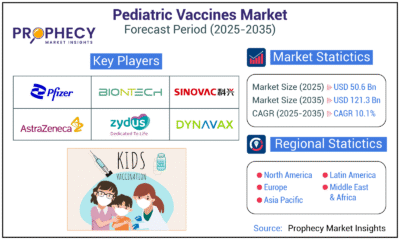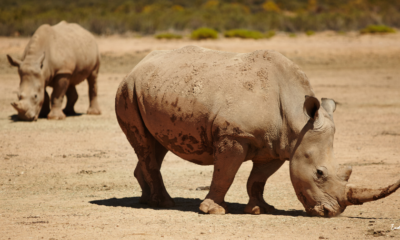Animals
Animal Cruelty Prevention: Innovating for a Kinder World

Animal cruelty is a pressing issue that affects countless creatures around the world. To combat this problem, innovative laws, public policies, and community efforts are essential. This article explores various strategies and resources aimed at preventing animal cruelty, fostering a kinder society for all living beings.
Key Takeaways
- Innovative laws can help protect vulnerable animals and reduce cruelty.
- Community outreach and education are vital for raising awareness about animal welfare.
- Shelters and rescues play a crucial role in finding safe homes for animals.
- Corporate partnerships can drive significant changes in animal protection policies.
- Engaging young people in humane education nurtures compassion for animals.
Innovative Laws and Public Policies for Animal Cruelty Prevention
Breed Discrimination and Its Impact
Breed discrimination laws often target specific dog breeds, leading to unfair treatment and increased euthanasia rates. These laws can harm both animals and communities. Instead of focusing on breed, it is more effective to promote responsible pet ownership and training.
- Education on dog behaviour can reduce incidents.
- Community programmes can help owners manage their pets better.
- Legislation should focus on the actions of owners rather than the breed itself.
Community Cats: Legal Protections
Community cats face numerous challenges, including being seen as nuisances. Recent laws have started to provide legal protections for these animals, allowing for managed colonies and TNR (Trap-Neuter-Return) programmes.
- TNR programmes help control the population humanely.
- Local ordinances can support community cat caregivers.
- Public awareness campaigns can change perceptions about community cats.
Euthanasia Laws and Alternatives
Euthanasia laws vary widely, and many regions are moving towards more humane alternatives. Innovative approaches are being developed to reduce unnecessary euthanasia.
- Foster care programmes can provide temporary homes for animals.
- Adoption drives can increase the number of pets finding homes.
- Behavioural training can help animals become more adoptable.
The shift towards humane laws and policies is crucial for creating a kinder world for animals. By focusing on education and community involvement, we can make significant strides in animal welfare.
In summary, innovative laws and public policies are essential for preventing animal cruelty. By addressing breed discrimination, protecting community cats, and exploring alternatives to euthanasia, we can foster a more compassionate society for all animals.
Key insights from recent animal behaviour studies show that understanding animal minds can lead to better treatment and policies.
Resources by Species for Animal Cruelty Prevention

Cats: Addressing Common Cruelty Issues
Cats often face various forms of cruelty, including neglect and abandonment. To combat this, communities can implement the following strategies:
- Spay and Neuter Programmes: Reducing the number of unwanted litters.
- Community Education: Teaching responsible pet ownership.
- Trap-Neuter-Return (TNR): Managing feral cat populations humanely.
Dogs: Prevention Strategies
To prevent cruelty towards dogs, consider these effective measures:
- Adoption Drives: Encouraging families to adopt rather than shop.
- Training Workshops: Teaching owners about proper care and training.
- Reporting Mechanisms: Establishing clear ways for the public to report suspected abuse.
Wildlife: Legal Protections
Wildlife also needs protection from cruelty. Here are some legal measures that can help:
- Protected Species Laws: Ensuring certain animals cannot be harmed.
- Habitat Conservation: Preserving natural environments to support wildlife.
- Public Awareness Campaigns: Educating the public about the importance of wildlife protection.
In summary, addressing animal cruelty requires a multi-faceted approach tailored to each species. By focusing on education, legal protections, and community involvement, we can create a safer environment for all animals.
| Species | Common Issues | Suggested Actions |
|---|---|---|
| Cats | Neglect, Abandonment | Spay/Neuter, TNR |
| Dogs | Abuse, Neglect | Adoption Drives, Training |
| Wildlife | Habitat Loss, Poaching | Legal Protections, Awareness |
Shelter and Rescue Operations: Best Practises
Adoptions: Ensuring Safe Homes
Adoption is a crucial part of animal rescue. To ensure that animals find safe and loving homes, shelters should:
- Screen potential adopters thoroughly.
- Provide education on pet care and responsibilities.
- Follow up with adopters to ensure the animal is well cared for.
Cruelty and Neglect: Intervention Strategies
When dealing with cases of cruelty or neglect, shelters must act swiftly and effectively. Key strategies include:
- Training staff to recognise signs of abuse.
- Collaborating with law enforcement for investigations.
- Providing resources for victims of domestic violence to keep their pets safe.
Disaster Preparation and Response
Being prepared for disasters is essential for shelters. Here are some best practises:
- Develop a disaster response plan that includes animal evacuation.
- Train staff and volunteers on emergency procedures.
- Partner with local organisations for resource sharing during crises.
In 2024 alone, the animal rescue team has rescued over 55,000 animals from cruelty and catastrophes. This highlights the importance of effective disaster response and community support in animal welfare.
Community Outreach and Humane Education
Humane Education Programmes
Humane education is essential for teaching kindness towards animals. It helps shape a more compassionate society. Here are some key components of effective humane education programmes:
- Curriculum Development: Integrating animal welfare topics into school subjects.
- Community Workshops: Engaging local communities through hands-on activities.
- Partnerships: Collaborating with local shelters and organisations.
Pets for Life: Community Support
The Pets for Life programme focuses on supporting pet owners in underserved communities. This initiative aims to:
- Provide resources for pet care.
- Offer free veterinary services.
- Educate families about responsible pet ownership.
Surrender Prevention Initiatives
Preventing pet surrender is crucial for reducing animal homelessness. Here are some strategies:
- Education: Teaching pet owners about the responsibilities of pet care.
- Support Services: Offering assistance for pet food and supplies.
- Counselling: Providing guidance for behavioural issues.
Community outreach and humane education are vital for creating a kinder world. By fostering understanding and compassion, we can significantly reduce animal cruelty and improve the lives of both pets and people.
Innovative Training and Resources for Animal Welfare
Academy of Prosocial Learning
The Academy of Prosocial Learning offers various training programmes aimed at enhancing animal welfare. These programmes focus on developing skills that promote kindness and compassion towards animals. Participants learn about effective communication, empathy, and community engagement.
Institute for Humane Education
The Institute for Humane Education provides resources and training for educators to incorporate humane education into their curricula. This includes lesson plans, workshops, and online courses that help teachers instil values of respect and care for animals in their students.
RedRover: Support and Training
RedRover is dedicated to improving the lives of animals through education and training. They offer resources for animal welfare professionals, including workshops on crisis intervention and animal care. Their training helps ensure that animals receive the best possible treatment in various situations.
Key Resources
Here are some key organisations that provide valuable training and resources for animal welfare:
- Academy of Prosocial Learning
- Institute for Humane Education
- RedRover
- Association of Professional Humane Educators
- HEART
Investing in training and resources is essential for creating a kinder world for animals. By equipping individuals with the right skills, we can foster a community that prioritises animal welfare and compassion.
Corporate Outreach and Legal Advocacy
Implementing Animal Protection Policies
Corporate outreach plays a vital role in promoting animal welfare. By collaborating with major food companies, organisations can help establish animal protection policies that significantly reduce animal suffering. These policies often include:
- Improved living conditions for farm animals
- Bans on cruel practises like force-feeding
- Commitment to sourcing from humane suppliers
Legal Actions Against Animal Cruelty
Legal advocacy is essential for holding animal abusers accountable. This involves working with law enforcement and government bodies to strengthen laws that protect animals. Key actions include:
- Reporting cases of abuse to authorities
- Supporting legislation that enhances animal rights
- Engaging in public campaigns to raise awareness about animal cruelty
Corporate Partnerships for Animal Welfare
Building partnerships with corporations can lead to substantial changes in animal welfare practises. These partnerships can:
- Fund animal welfare initiatives
- Promote humane products
- Increase public awareness about animal rights
By working together, we can create a world where animals are treated with respect and compassion. Every effort counts in the fight against cruelty.
In summary, corporate outreach and legal advocacy are crucial in the battle against animal cruelty. Through effective policies and partnerships, we can pave the way for a kinder world for all animals.
Highlight: This page features a collection of articles related to animal welfare.
Current Campaigns and Victories in Animal Cruelty Prevention
Banning Foie Gras and Force-Feeding
One of the most significant campaigns has been the banning of foie gras, which involves the cruel practise of force-feeding ducks and geese. This campaign has gained momentum across various countries, leading to legislative changes that protect these animals from such inhumane treatment.
Saving Male Chicks from the Egg Industry
Another vital initiative focuses on saving male chicks from the egg industry. Traditionally, male chicks are often culled shortly after hatching because they do not lay eggs. Recent campaigns have pushed for more humane alternatives, such as in-ovo sexing technology, which allows for the identification of male and female chicks before hatching, thus preventing unnecessary deaths.
Creating Legal Protection for Fish
The movement to create legal protections for fish is gaining traction. Many advocates are working to ensure that fish are recognised as sentient beings, deserving of protection from cruelty. This includes campaigns aimed at banning practises like live fish transport and promoting more humane fishing methods.
The fight against animal cruelty is not just about laws; it’s about changing hearts and minds. Every campaign brings us closer to a kinder world for all creatures.
| Campaigns | Status | Impact |
|---|---|---|
| Banning Foie Gras | In Progress | Reduced suffering of ducks |
| Saving Male Chicks | Ongoing | Prevents culling of male chicks |
| Legal Protection for Fish | Emerging | Increased awareness and advocacy |
These campaigns represent just a few of the many efforts underway to combat animal cruelty. Each victory, no matter how small, contributes to a larger movement towards a more compassionate society.
The Role of Undercover Investigations in Animal Cruelty Prevention

Undercover investigations play a crucial role in revealing the harsh realities faced by animals in various industries. These investigations help to expose the truth behind animal cruelty, leading to greater public awareness and legal action against offenders.
Techniques and Challenges
- Surveillance: Investigators often use hidden cameras to document abusive practises.
- Infiltration: Some investigators may work undercover in facilities to gather first-hand evidence.
- Legal Risks: Investigators face potential legal challenges, including trespassing charges.
Impact on Public Awareness
- Media Coverage: Investigative reports often lead to news stories that inform the public about animal suffering.
- Consumer Choices: Exposed practises can influence consumers to choose more humane products.
- Legislative Change: Public outcry from investigations can lead to new laws protecting animals.
Case Studies of Successful Investigations
- Factory Farms: Investigations have revealed shocking conditions in factory farms, prompting calls for reform.
- Animal Testing Labs: Exposures of cruelty in testing facilities have led to increased scrutiny and regulation.
- Circuses and Zoos: Undercover work has uncovered neglect and abuse in entertainment settings, resulting in public backlash.
The work of undercover investigators is vital in the fight against animal cruelty, shining a light on practises that many would prefer to keep hidden. Their efforts not only protect animals but also educate the public about the importance of animal conservation.
Building a Kinder Generation Through Education
Generation Kind: School Programmes
Generation Kind is an exciting initiative aimed at teaching young people about kindness towards animals. It focuses on three main areas:
- Young people in schools: Engaging students through interactive lessons.
- Disadvantaged young people: Providing resources and support to those in need.
- Young offenders: Offering rehabilitation through animal care.
Engaging Disadvantaged Youth
To help shape a kinder generation, we can:
- Organise community events that promote animal welfare.
- Create mentorship programmes connecting youth with animal shelters.
- Develop workshops that teach empathy and responsibility.
Young Offenders: Rehabilitation Through Kindness
Involving young offenders in animal care can lead to positive changes. This approach helps them learn:
- Compassion: Understanding the needs of animals.
- Responsibility: Caring for another living being.
- Teamwork: Working with others to achieve common goals.
By teaching children to respect and care for animals, we can create a future where kindness prevails. Together, we can make a difference!
Volunteer and Community Involvement in Animal Cruelty Prevention
Volunteer Opportunities
Volunteering is a fantastic way to make a difference in the lives of animals. Here are some ways you can get involved:
- Fostering: Provide temporary homes for animals in need.
- Shelter Support: Help with daily tasks at local shelters.
- Community Events: Participate in or organise events to raise awareness.
Community Events and Demonstrations
Engaging your community is crucial for animal welfare. Consider these activities:
- Awareness Campaigns: Host events to educate the public about animal cruelty.
- Fundraising Drives: Collect donations to support local shelters.
- Pet Adoption Days: Collaborate with shelters to find homes for animals.
Supporting Local Animal Shelters
Local shelters rely on community support. Here’s how you can help:
- Donations: Provide food, toys, or funds to shelters.
- Volunteer Work: Offer your time to assist with animal care.
- Advocacy: Speak out against animal cruelty in your community.
Volunteering not only helps animals but also empowers owners and engages your community to boost resources.
The Importance of Humane Education in Schools
Humane education plays a vital role in shaping a kinder future. Teaching children about compassion towards animals helps build a more empathetic society. Here are some key aspects of humane education in schools:
Developing Compassion in Children
- Encourages kindness towards all living beings.
- Fosters understanding of animal welfare issues.
- Promotes respect for the environment.
Educational Resources for Teachers
- Provides lesson plans focused on empathy and kindness.
- Offers training for educators on humane topics.
- Supplies materials that engage students in active learning.
Campaigns for Animal Welfare Education
- Organises events to raise awareness about animal rights.
- Collaborates with local shelters for hands-on experiences.
- Engages students in community service projects related to animal care.
Humane education is essential for nurturing a generation that values kindness and respect for all creatures. It lays the groundwork for a more compassionate society.
In conclusion, integrating humane education into school curriculums not only benefits animals but also enriches the lives of students, helping them grow into responsible and caring adults. By focusing on these educational initiatives, we can create a kinder world for everyone.
Conclusion
In conclusion, creating a kinder world for animals is a task that requires our collective effort. By focusing on education and prevention, we can instil values of compassion in young people. It is essential to teach children about kindness towards animals from an early age, as this can lead to a more caring society in the future. Every small action counts, whether it’s volunteering, spreading awareness, or supporting animal welfare initiatives. Together, we can make a significant difference and ensure that all animals live free from suffering.
Frequently Asked Questions
What is animal cruelty prevention?
Animal cruelty prevention means taking steps to stop harm to animals. This can include laws, education, and community programmes.
How can I help prevent animal cruelty?
You can help by reporting cruelty, volunteering at shelters, and spreading awareness about animal rights.
What are some signs of animal cruelty?
Signs include neglect, physical injuries, or animals being kept in unsafe conditions.
Are there laws against animal cruelty?
Yes, many countries have laws to protect animals from abuse and neglect.
What should I do if I see animal cruelty?
You should report it to local authorities or animal control immediately.
How does education help prevent animal cruelty?
Education teaches people about kindness and respect for animals, which can lead to better treatment.
Can animals be adopted from shelters?
Yes, many shelters have animals available for adoption, giving them a chance for a loving home.
What is the role of community outreach in animal welfare?
Community outreach helps raise awareness and encourages people to get involved in animal welfare efforts.
-

 Press Release7 days ago
Press Release7 days agoClinical Trials Market Set for Robust Growth, Driven by Drug Development Surge and Digital Innovation
-

 Press Release7 days ago
Press Release7 days agoPediatric Vaccines Market: Safeguarding Futures, Driving Growth
-

 Press Release7 days ago
Press Release7 days agoWaterproof Structural Adhesives Market: A Comprehensive Study Towards USD 10.3 Billion in 2035
-

 Press Release7 days ago
Press Release7 days agoDownhole Tools Market: Navigating Subsurface Frontiers with Precision
-

 Press Release7 days ago
Press Release7 days agoFaropenem Sodium Market: A Potent Weapon in the Fight Against Bacterial Infections























